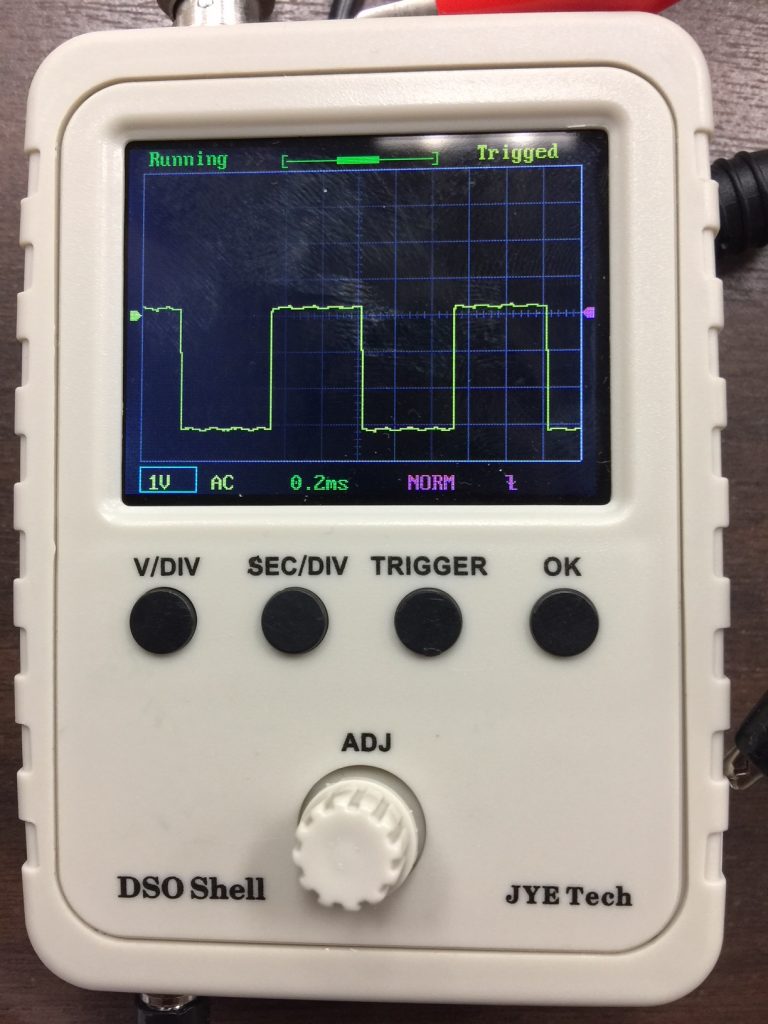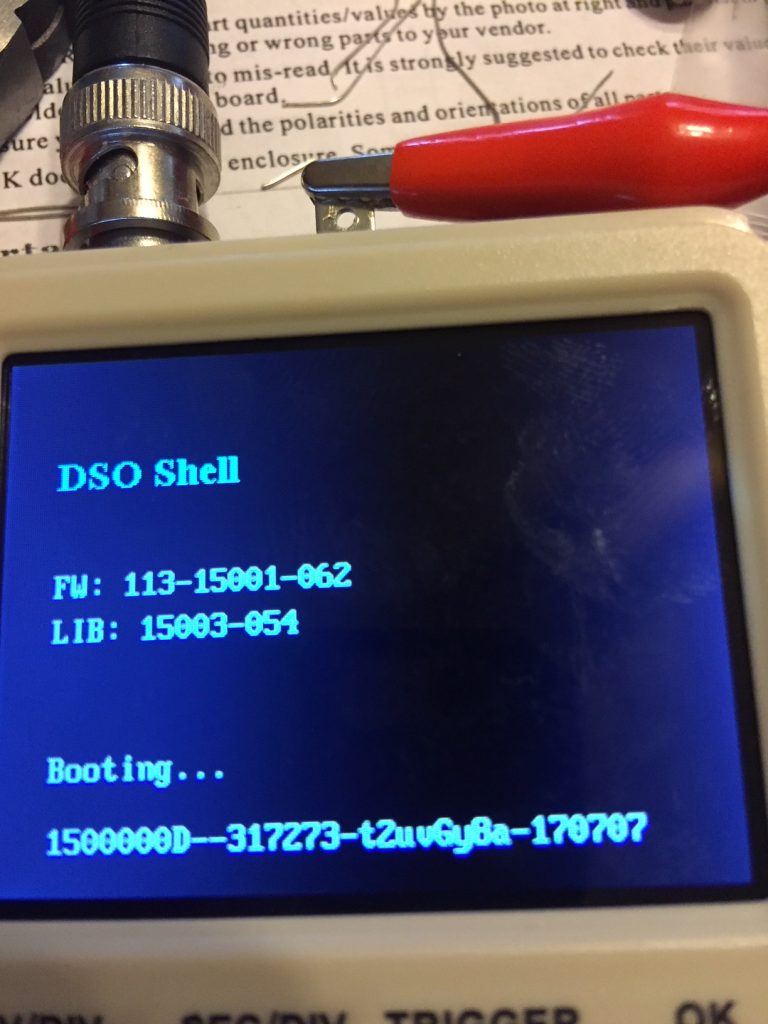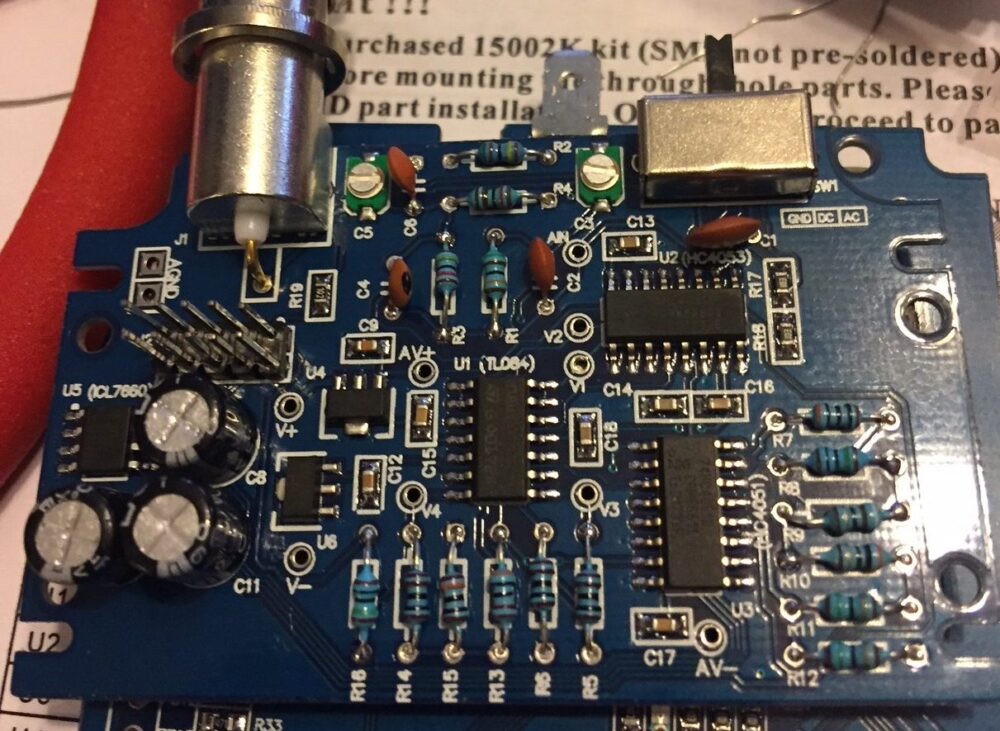Introduction to the DSO150 Oscilloscope
The DSO150 Oscilloscope is a kit that you can purchase and assemble yourself. There are several versions of this kit. This particular kit is the surface mount version, and requires an external 9 volt power supply.

The purpose of an oscilloscope is to monitor various waveforms. You can use an oscilloscope to check for noise or capacitance on a network, which will degrade the signal. If you use arduino projects, you can use the oscilloscope to monitor the pulse with modulation of “analog” outputs from the processor.
An oscilloscope has two main settings: Volts per division, and Milliseconds per division. Voltage (amplitude) is measure vertically, and the time divisions are measured horizontally.
Assembling the DSO150

This kit was easy to assemble, but it does take a little bit of time. Most of the work you will do is on the analog board adding resistors, capacitors, etc. When I finished the kit, and applied power, the DSO150 booted up the first time, and was able to measure signals without a problem! I would recommend that you have previous experience in soldering before attempting to assemble this kit. At least, watch some youtube videos on soldering, and practice your soldering on a prototype board.

Most of my time assembling this project was for the analog board. The only reason this took me so much time was because I had trouble reading the color codes, and my multimeter was not ideal for measuring some of the higher resistance values. For this step, I actually used a microscope to determine the color codes. These color codes show the resistance value, so they can properly be placed on the board.

As you can see, there is a little bit of noise on the signal, but for $25, I definitely can live with that! The DSO150 Oscilloscope is small enough to fit in your pocket, and is a handy tool for troubleshooting lower frequency signals (Less than 200 KHz).
If you do a lot of work with electronics, I would recommend checking out the post on the MK-328 meter as well! It’s another handy tool to have in your electronics lab!
— Ricky Bryce
